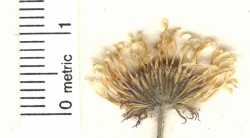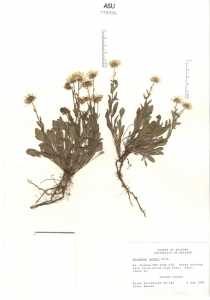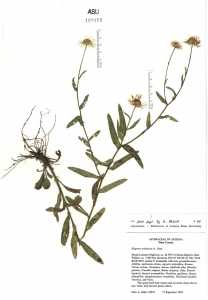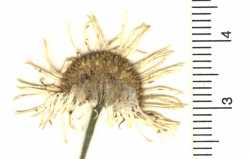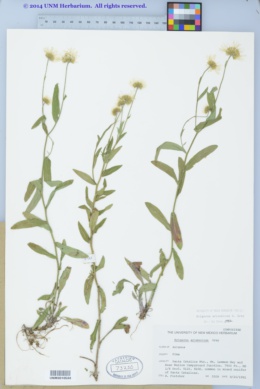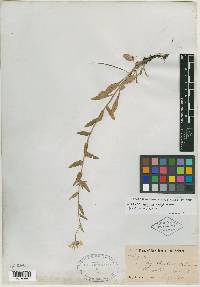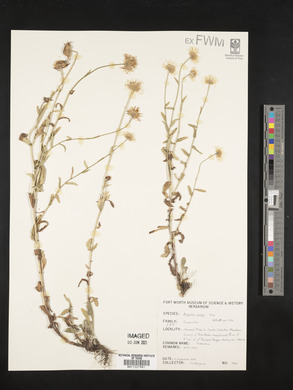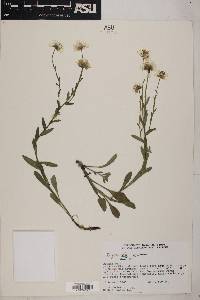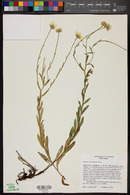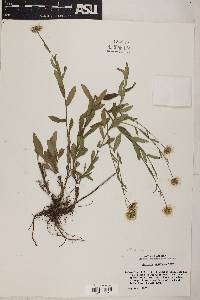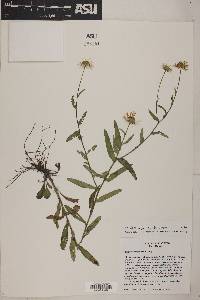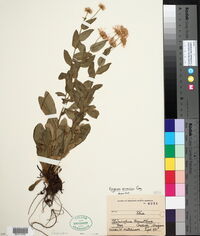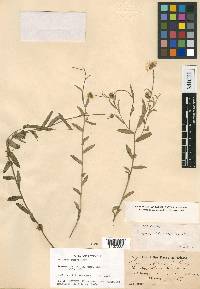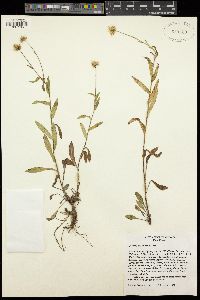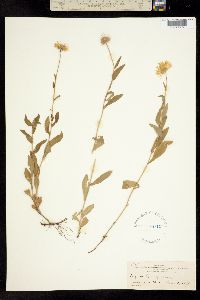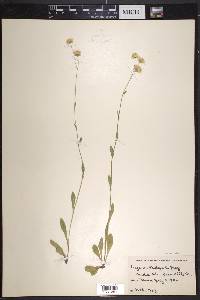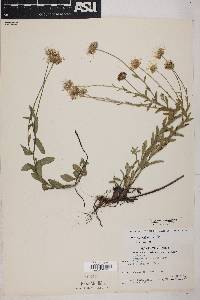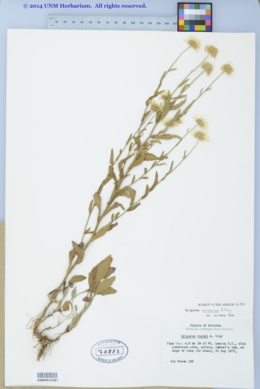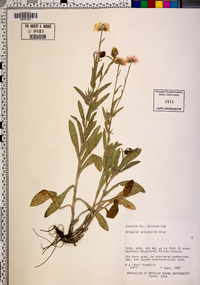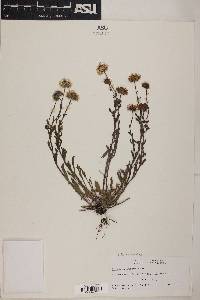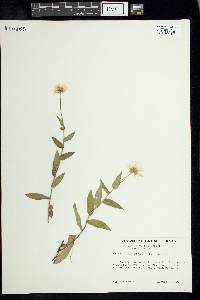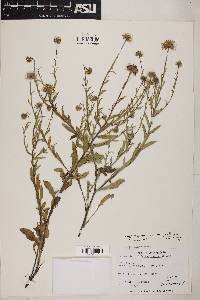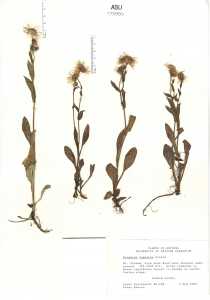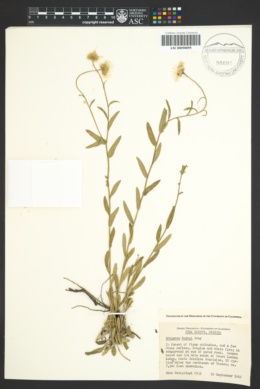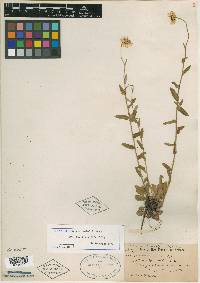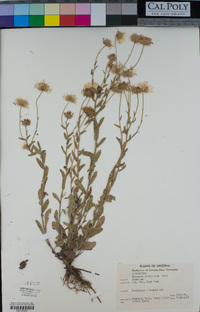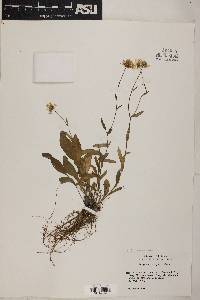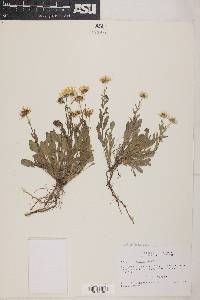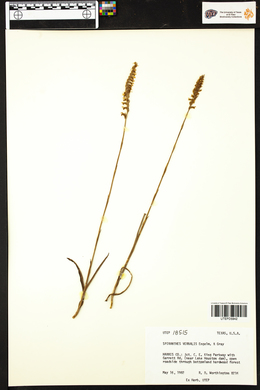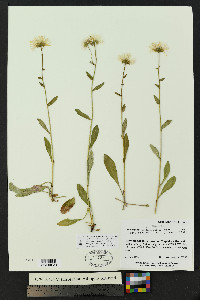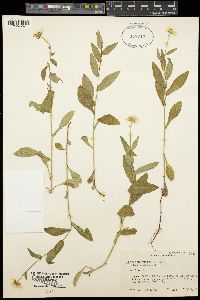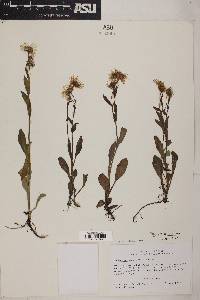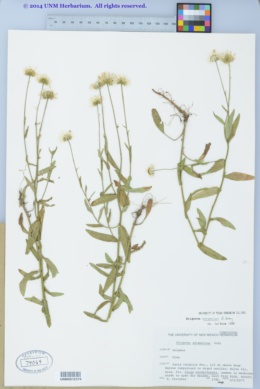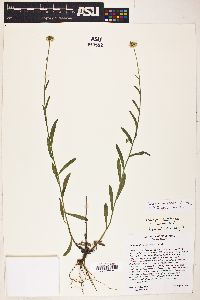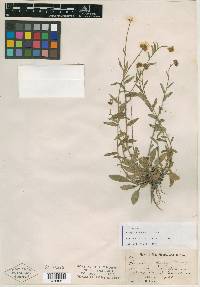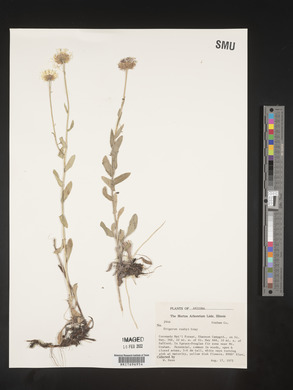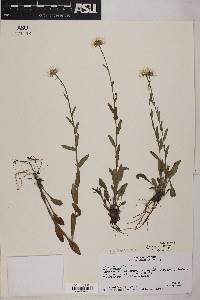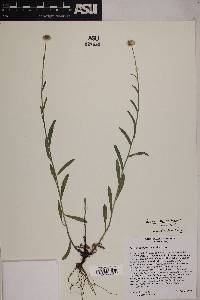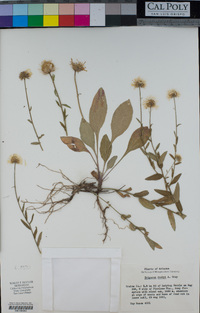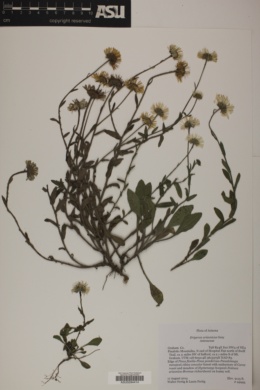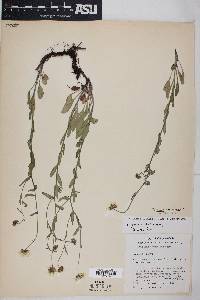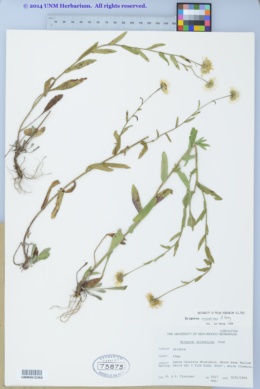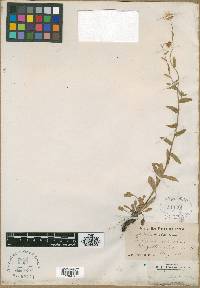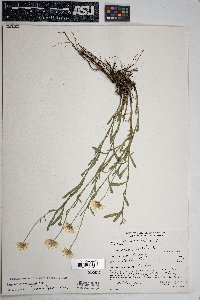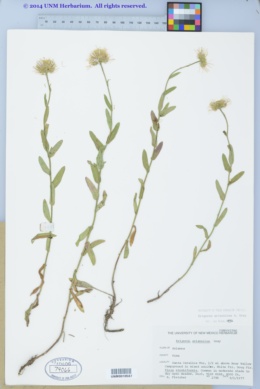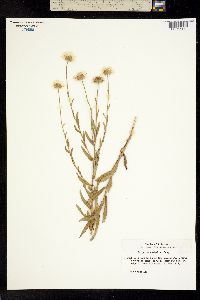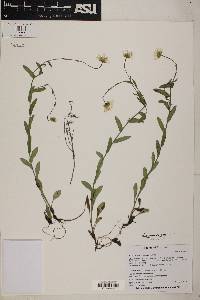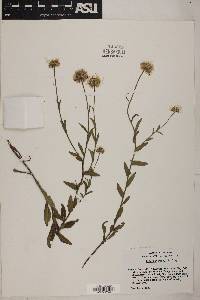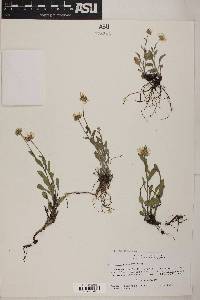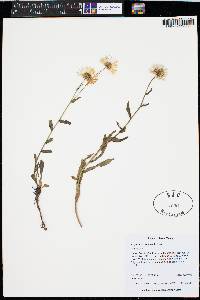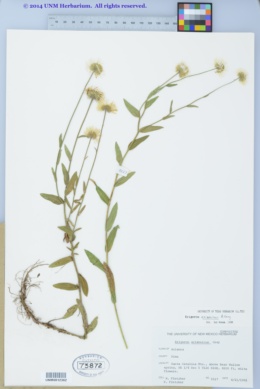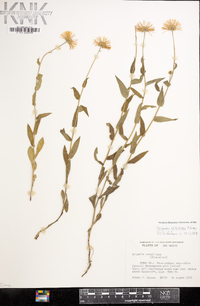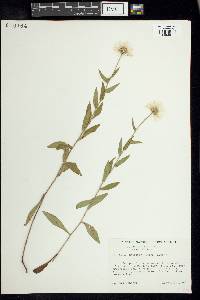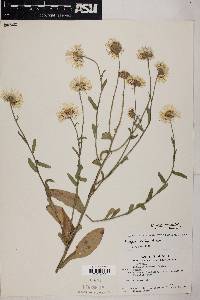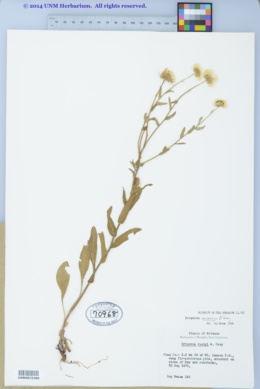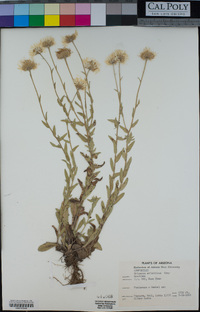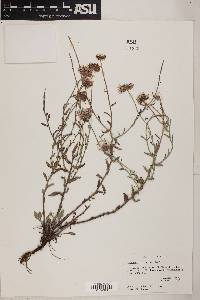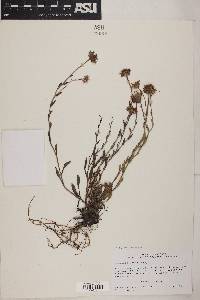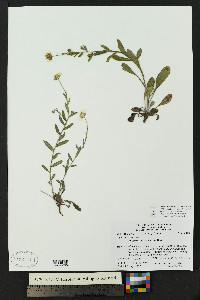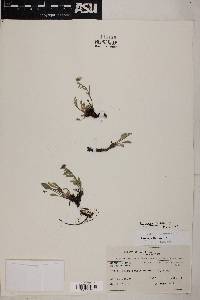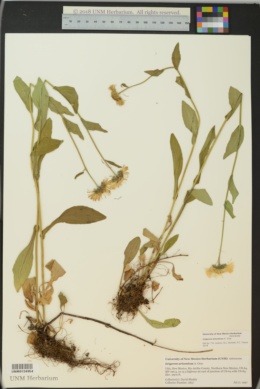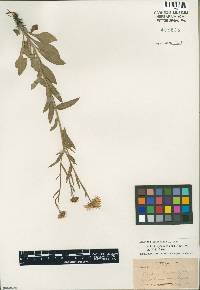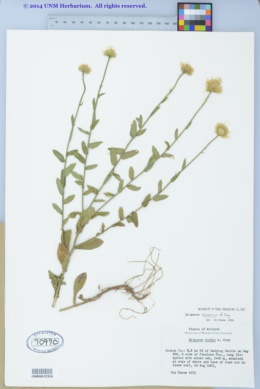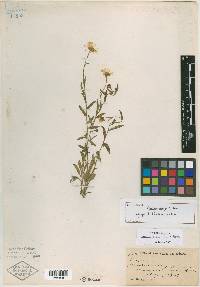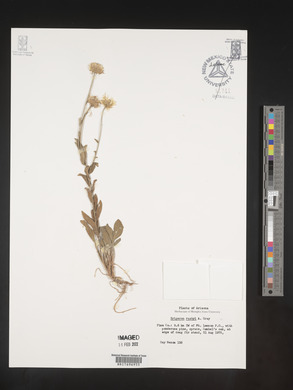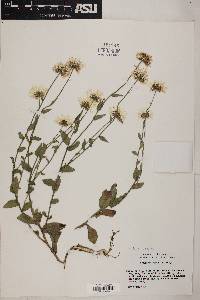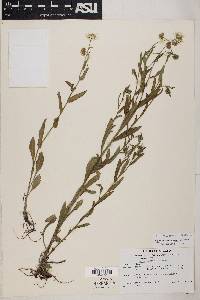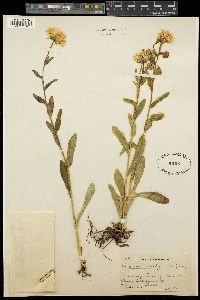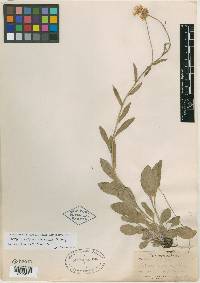Erigeron arizonicus
|
|
|
|
Family: Asteraceae
Arizona Fleabane
[Erigeron rusbyi A. Gray] |
Perennials, 8-40(-60) cm; rhizomatous, fibrous-rooted, caudices or rhizomes relatively thick, simple or branched, sometimes resembling a taproot. Stems erect to basally ascending, moderately to densely strigose to strigoso-hirsute or hirsute, eglandular. Leaves basal (commonly persistent) and cauline; basal blades often 3-nerved, spatulate, obovate to ovate, or elliptic, 20-150 × 5-25 mm, margins entire to shallowly serrate, faces loosely strigose, rarely minutely glandular; cauline blades slightly smaller than basal, relatively even-sized to peduncle bases, (bases subclasping) margins entire, becoming lanceolate (bases non-clasping) distally. Heads 1-4(-6) (from branches on distal 1 / 3 - 1 / 2 of stem, peduncles distinct, 1.5-9 cm). Involucres 5-7 × 9-18 mm. Phyllaries in 3-4 series (greenish), moderately piloso-hirsute, densely minutely glandular (sometimes obscured by hairs). Ray florets 25-80; corollas white, drying white or lilac-tinged, 8-10 mm (ca. 1 mm wide), laminae coiling at tips. Disc corollas 2.9-4 mm. Cypselae 1.6-2.1 mm, 2-nerved, faces sparsely strigose; pappi: outer of setae, inner of 15-26 bristles. 2n = 18. Flowering (May-)Jul-Sep(-Oct). Grassy slopes, openings, roadsides, sometimes rock crevices and ledges, oak-juniper to oak-pine, pine, pine-fir, Douglas fir, spruce-fir; (1800-)2100-2900(-3200) m; Ariz., N.Mex.; Mexico (Sonora). FNA 2006, Kearney and Peebles 1969, McDougall 1973 Duration: Perennial Nativity: Native Lifeform: Forb/Herb General: Herbaceous perennials, herbage pilose with ash gray, spreading or ascending hairs, rhizomatous, arising from a woody caudex. Leaves: Alternate, basal and cauline, basal leaves spatulate, ovate, or elliptic, the margins shallowly toothed, 3-nerved, the cauline leaves reduced, with entire margins, becoming lanceolate distally. Flowers: Heads somewhat large and showy for the species, radiate, rays white or drying pink, 25-80, coiling at the tips, disks yellow, involucres 5-7 mm high and 9-18 mm wide, phyllaries in 3-4 series, somewhat herbaceous, glandular, and pilose, heads borne in groups of 1-3 on long peduncles. Fruits: Achenes 2 nerved, stiff hairs. Pappus sparse, of subequal capillary bristles, distinctly double, the outer series of short-bristly, scaly hairs, the inner of 15-26 bristles. Ecology: Found on grassy slopes, openings, roadsides, rock crevices and ledges, in oak-juniper, oak-pine, pine, pine-fir, and Douglas fir or spruce-fir communities, from 6,500-8,000 ft (1981-2438 m); flowering July-September. Distribution: Arizona and New Mexico; Mexico. Notes: The keys to this species are the perennial, densely hairy plants, the rays white or drying pink, the upper leaves strongly reduced, the heads mostly 1-3 on long peduncles, and the double series of pappus, with the outer series short and scaly-bristly. Key breaks in FNA put this species in the rhizomatous group with leaves becoming lanceolate with non-clasping blades that are distally reduced. Pay attention to its having a petiole and lanceolate leaves as well. Ethnobotany: Unknown, but other species in the genera have uses. Etymology: Erigeron means Early-Old-Man, as named by Theophrastus, while arizonicus means of or from Arizona. Synonyms: Erigeron rusbyi Editor: SBuckley, 2010, LCrumbacher |



